Introduction
I was interested to discover that Falkland sheep are not a specific breed, but rather a blend of fibres that come from a variety of breeds. They are raised on the Falkland Islands, located off the coast of Argentina, in the South Atlantic Ocean. Despite being a mix of breeds, Falkland wool has become known for its excellent quality and unique characteristics.
Some History
The history of sheep farming on the Falkland Islands goes back centuries. The first sheep were brought to the islands in the early 19th century by British settlers, and the industry grew quickly from there. Today, sheep farming remains a vital part of the economy on the Falkland Islands, with wool being a primary export.
About the Wool
Falkland wool is highly prized for its excellent quality. The sheep are raised in a unique environment, with cool temperatures and a lack of diseases that can affect the animals. As a result, the wool they produce is incredibly white and free from any chemical treatments or sheep dips. This makes it a great choice for people who might be sensitive to these things rather than having a wool sensitivity - a topic for another time.
The wool itself is a mix of fibres from several different breeds of sheep, including Merino, Corriedale, Romney, and Polwarth. The resulting fiber is a delight to spin, with a slightly "toothy" texture that makes it easy for beginners to work with. While it is not as soft as a fine Merino, it has a unique feel that many spinners would enjoy and appreciate.
Study Notes
For this study I have used combed top and made samples using different spinning styles including short forward draft, short backward draft and long backwards draft (which I am still learning as short forward is my regular way of spinning).
I am also creating 2 and 3 ply yarns, Andean plying off of my hand for the 2-ply samples as they are relatively small, and plying off 3 bobbins for the 3 ply or sometimes chain plying
Fibre details
Colour - very light off white
27-30 micron
12-15cm staple length
Minimal crimp - probably from the Merino in the blend so may change depending on the amount in the blend each year?
Elasticity - was quite low but once spun in a loose 2 ply there was an increase stretch of 1.5cm over a 10cm length of yarn.
The worsted spun samples were soft yet strong, rustic with a light fuzzy halo to the yarn which may be from the Romney in the blend.
The woolen spun samples were beautifully lofty, soft and airy with a lovely halo. This would be my preferred method to spin for a sweater in this fibre. It also had good water resistance when I went to soak and set the twist due to the air trapped in the fibre.
Dyeing the Yarn
Conclusion
I have found that Falkland wool is really enjoyable to spin and a great choice for dyers. It would also make a very versatile yarn to be used in a variety of projects. Its unique characteristics make it perfect for everything from warm, cozy sweaters to delicate lace shawls depending on how it is spun. Whether you're an experienced spinner or a beginner, Falkland wool is definitely worth trying out.




